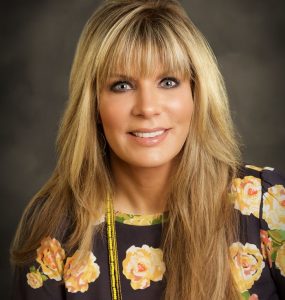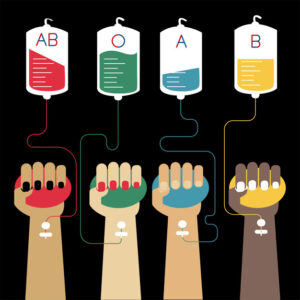Most Spoken Languages in The World 2020

There are over 7,000 languages in the world, each with their own histories and sounds. All of these should be celebrated. But some languages are much more widely spoken than the rest. Find out which languages keep us connected and keep the world running.
Determining what are the most spoken languages in the world is a more difficult task than you might imagine. When tallied according to number of native speakers only, these are the 5 most spoken languages in the world.
Most Spoken languages in the world
1. Chinese
People sometimes speak of “Chinese” as if it’s a single language. It’s a group of related languages, of which Mandarin Chinese is by far the biggest. It’s an official language in the People’s Republic of China, the Republic of China (Taiwan), and Singapore. Mandarin Chinese is the largest language in the world when counting only first language (native) speakers. This is due to the significant population of China. Numbers vary widely — Ethnologue puts the number of native speakers at almost 1.2 billion native speakers, roughly a billion of whom speak Mandarin — but there’s no doubt it’s the most spoken language in the world. If you wish to learn a language that one in six people in the world speak, this is the one for you. Seeing as Chinese is a tonal language that uses thousands of logograms, it will certainly keep you busy.
2. Spanish
Sí señor! By number of native speakers, Spanish is the second biggest language in the world. If we were only to look at native speakers, Spanish has its nose in front of English with about 400 million speakers. If you want a language that will open a whole continent to you, Spanish is your best bet. The language now known as Spanish originated in the Castile region of Spain. For this reason, it’s sometimes referred to as “Castilian” – castellano in the language itself. Since then, Spanish explorers and conquistadores have spread their language all around the world. It’s spoken across South and Central America and the Caribbean, with pockets of speakers in Southeast Asia and even Africa.
(Trivia titbit: Equatorial Guinea is the only country in Africa to have Spanish as an official language.)
3. English
If you’re reading this article, you may be one of the 360 million-odd native English speakers, or one of the halves a billion people who speak it as a second language. Thanks to the historical dominance of the British Empire – and, more recently, the economic and cultural clout of the United States – English is well-established as the world’s lingua franca (if only there were other contenders for an international language) of business, travel and international relations.
The relative ease with which English can be picked up (especially compared with Chinese) and the pervasive soft power of US culture means that English will continue to dominate the world stage for the foreseeable future. For some, English is still synonymous with opportunity and a better quality of life.
4. Hindustani
Hindustani is the collective name for Hindi and Urdu – two dialects of the same language. India has 23 official languages, with Hindi/Urdu chief among them. Whether this is one language — Hindustani — or two dialects, is still fiercely debated. Hindi is spoken across northern and central India and is the official language of the Indian government. Urdu is primarily spoken in Pakistan. While Hindi and Urdu have differences in vocabulary and pronunciation, speakers of either language can easily communicate with each other. A notable difference between Hindi and Urdu is that they use different writing systems. Hindi is usually written in in. Urdu, on the other hand, is written right-to-left with a script that’s closely related to the Arabic alphabet. Prime Minister Narendra Modi, a Hindu nationalist, is seeking Hindi displace English in the southern Indian states as the primary language of official communication and education, a strategy that has been met with resistance. If you ever travel in the Indian subcontinent, a little Hindi will get you a long way. Plus, this is the language that gave us shampoo, jungle, jodhpurs and bungalow — what’s not to love?
5. Arabic
Arabic is the official language of 26 countries, although some have argued that it’s not really one language, but several. Recent numbers put Arabic at around 250 million native speakers. But this is another instance of numbers not telling the full tale: Arabic, like Chinese, is so vastly different in its respective dialects as to be effectively several languages, grouped as one for the sake of convenience. Modern Standard Arabic is a primarily written form, closely related to the Classical Arabic of the Quran. However, the spoken forms of Arabic in, say, Oman and Morocco are so different that a couple of philosophy professors from these countries might be able to discuss the finer points of the ancient texts while still struggling to order lunch. If we leave this aside and assume that there’s a single tongue called “Arabic”, then it’s a massive language, with over 400 million speakers. It originated on the Arabian Peninsula and has since spread all across the Middle East and North Africa. Arabic is also, of course, the language of Islam. While most Muslims are not native Arabic speakers, the language is of special importance to the world’s second-largest religion. Islam holds that God (via the angel Gabriel) literally spoke in Arabic when he dictated the Quran to Mohammed. That was 1400 years ago, and modern Arabic dialects have changed a lot since the “Classical Arabic” of the Quran. As well as their local dialects, many Arabs also speak “Modern Standard Arabic”, an academic dialect that’s based on Classical Arabic. Other than these five languages, we also have Bengali, Portuguese, Russian, Japanese, Tamil, French which are some of the most spoken languages in the world, but with lesser speakers. Our diverse world is full of languages. Some are widely spoken, while others are small, intimate secrets that bind a group of people together. Yet all languages are equally important.




















